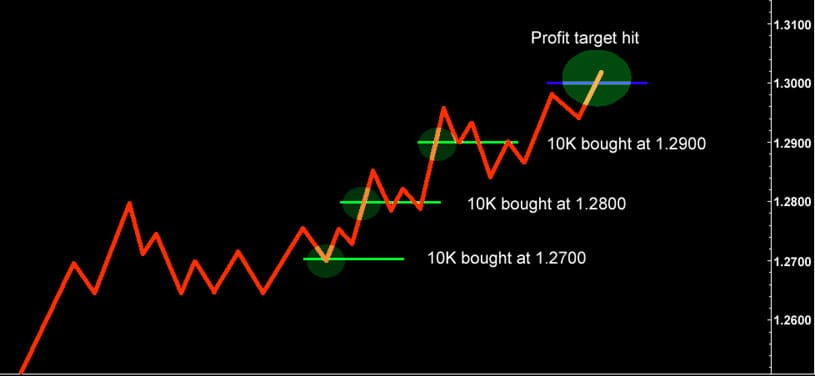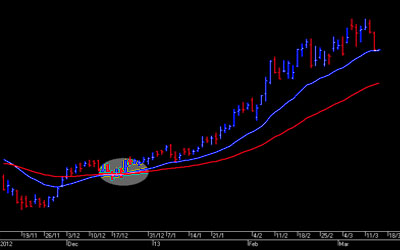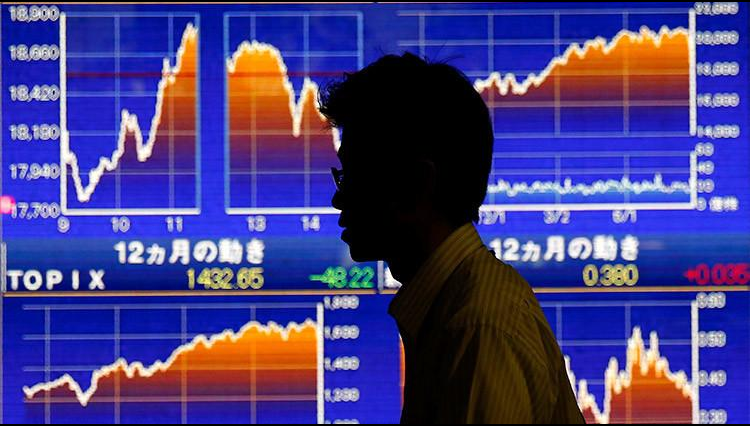In the final part of our series on scaling in and out of forex trades, we’re going to take a look at a way to increase your maximum profit on trades – adding to a winning position.
As was the case in the previous lesson, where we looked at scaling into a losing trade, there are certain rules that you need to abide by when scaling into winning positions in order to keep the level of risk within a manageable range. These are:
- Set out your entry levels for additional units in advance
- Do risk calculations that take into account the additional units that you plan to add
- Use a trailing stop to keep the risk level in check
Example
You have $10,000 in your trading account, and you are keeping an eye on EUR/USD. After a period of consolidation you have reason to believe that buyers will push the pair higher. Therefore, you buy 10,000 units of EUR/USD at 1.2700.
Because the consolidation didn’t go much below 1.2650, you decide to place your stop just below this point at 1.2600. Having identified 1.3000 as a psychologically important resistance level, you decide to place your take profits order there. This gives you a 100 pip stop and a 300 pip profit target, which represents a risk/reward ratio of 1:3.
Because the trade looks so promising, especially given the favourable risk/reward ratio, you decide to give yourself room to scale into the trade, starting with an initial risk of 1% and adding more units for every 100 pips that the price moves in your favour.
Given that you have $10k in your account, your initial risk will be $100 ($10,000 x 0.01). This gives you an initial position size of 10,000 units, and you plan to add 10,000 units and trail your stop for every 100 pips that the price moves in your favour. Each addition alters the risk/reward ratio of the trade.
Assuming the price goes the way that you expect, this is how you would add to the trade. First of all, you buy 10k units of EUR/USD at 1.2700, setting a stop at 1.2600. At this point your downside risk is -$100.
Then, you buy 10k units of EUR/USD at 1.2800, moving the stop to 1.2700. At this point, your trade is completely risk-free, as the stop is now at the original entry point.
When the price moves up to 1.2900, you buy 10k more units and move the stop to 1.2800. At this stage, $100 of profit is now locked in.
Then, when the price hits the profit target (1.3000), you will have turned a potential $300 profit into a $600 profit, without ever risking more than your initial $100. You made $300 on the first position you took, $200 on the second, and $100 on the third.
Potential Drawbacks
Of course, not every scenario will go as well as this one. In general, scaling into winning positions is a technique best suited to markets that are trending, or strong short-term moves. Adding to winning positions in range-bound or low-liquidity markets tends to result in a higher-than-average number of stop-outs.
As you add to your position, your average opening price moves in the direction of the move. Therefore, if the market goes against you after you have added, it doesn’t have to move as far in order to push the trade into loss-making territory.
It’s also worth bearing in mind that when you add to a position, you are using up more of your available margin – reducing the amount that you have available for other trades.
Conclusion
That about brings us to the end of our series on scaling in and out. But before we go, here is a quick reminder of the golden rules for this technique:
- Always use stop losses
- Keep the risk of your combined positions within your risk comfort zone when scaling into losing positions
- Use a trailing stop to control the risk level when adding to winning positions
- Determine the position sizes and the places you will add or remove units from your position before entering the trade
- Adding to winning trades works best in trending markets
- Scaling out works better in range-bound markets
Other articles in this series:
Forex Trading Strategy: Scaling In and Out Part 3
Forex Trading Strategy: Scaling In and Out Part 2
Forex Trading Strategy: Scaling In and Out Part 1
Tradersdna is a leading digital and social media platform for traders and investors. Tradersdna offers premiere resources for trading and investing education, digital resources for personal finance, market analysis and free trading guides. More about TradersDNA Features: What Does It Take to Become an Aggressive Trader? | Everything You Need to Know About White Label Trading Software | Advantages of Automated Forex Trading










































